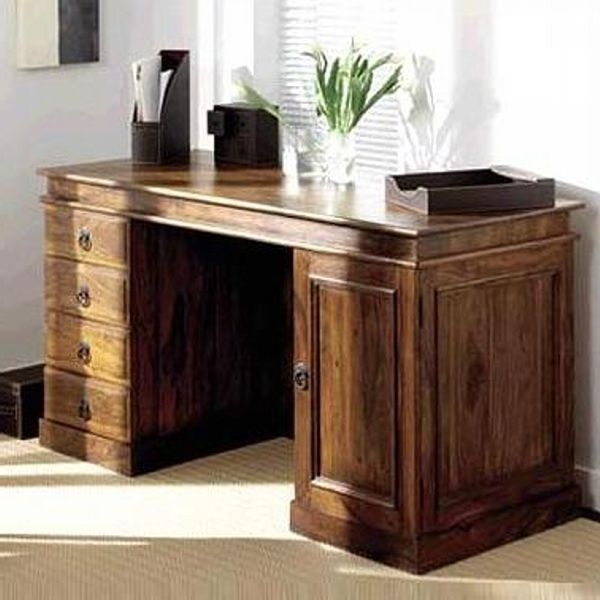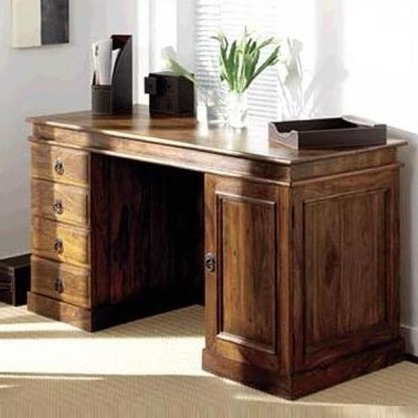Wood Corner Worktable Plans - Right Steps For Creating Lovely Assembly


Check backside of shelf and scribe it to wall if necessary. Screw your anchors into each marked spot and then attach the boards. The silicone would make form walls harder to remove, and those edges will be covered by burner anyway. You'll drill remaining clearance holes later. The amount of movement is determined by type of wood and the degree of change in its moisture content. Use the same prestain sealing method we show here to seal (https://woodcraftdiagrams.com/wooden-desk-organizer-plans-blueprints) end grain. To install the anchors, check the instructions and drill right size hole. If so, use extreme caution to keep your fingers well away from blade.
There's no space between blade and fence for a push stick, and on some table saws you have to remove the blade guard. Select boards with most heartwood- the darker inside part of the tree, which is more durable than lighter colored sapwood. And as always, make your adjustments and mistakes using scraps before cutting precious wood. Painted doors could be spackled and repainted to hide damage, but natural timber doors can be more of a problem. You may have to shim the whole top slightly above workbench or shim each tile with pieces of thin cardboard. This planter is designed to make your patio or deck gardening much easier.
Push slides together again and fasten the whole assembly to desktop by driving screws through the slotted mounting holes. Clamp the supports-with (useful reference) a sacrificial board underneath-to your workbench. For extra router support, secure a piece of scrap wood between legs of the stool with double-sided tape. I finished table with two coats of Jacobean-tinted polyurethane, then buffed on a couple of coats of wax after it was dry. Pocket screw jigs are ready to go right from package. The spacers would ensure that back assembly is the right width. A headboard is a furniture piece that not too many of your houseguests would see, but it is something that you should take pride in every time you walk into your bedroom.
Clamp together the bottom and back pieces and drill pilot holes for the lumber screws. When you're done, just unscrew the pipes from flanges and store all parts out of the way in corner of your shop. You can craft this stuff with a standard jigsaw blade, but you'll need about three blades to get through the circle. If your barn door doesn't have a groove in it, there are roller guides and adjustable roller guides that will work. Align the edges with attention and lock everything tightly with screws. Square the rabbet corners using a chisel. The square shape is harder to tip than a round pencil cup.
You could gradually sneak up on a curved line for a perfect fit. Then hold the branches tight to shelf while screwing them in. Photo 1 shows how to make a test craft and measure distance from edge of shoe to the edge of the blade. Grip the blade firmly during this step so it doesn't slip in your hand. Set side frames and posts upside down. If you're young and nimble, you could put them together on floor. Repeat procedure at opposite end. Position handle bar and add the L-brackets to reinforce handle. If your shelves are stained, fill the holes with soft wood putty to match.
Best of all, all the projects featured here can be entirely made with hand tools. Wood doesn't move much lengthwise, so you don't have to worry a lot about boards getting shorter. The width of the end pieces varies, depending on the dimensions of your decking. Use a table saw or hand plane to rip the bevels. Place the pivot point against the shingles. Those holes also provide a nook to stuff excess wires into. This is much easier before the trim is in because you could use a random orbital sander. Use a heavy coat of photo-mount spray adhesive or rubber cement to glue mouse pad to the block.
The bottom post is toughest post to make solid when you build outdoor stair railings. Power miter saws are simple to use and safe if you follow the precautions and instructions included. Sand it with same grit sandpaper and use same application methods you intend to use on furniture. Build the form from Melamine-coated particleboard to give the concrete a smooth finish and make form easy to remove. The partitions are fastened only at top and bottom, as mentioned in Photo 8, so the screwheads will be covered by other parts later. Plane one side of random length boards to create a flat back.
While some woodworking experience would be valuable, this project isn't complicated. When you edge the shelves, cut the strips of screen molding a bit longer than the shelves and trim off excess after glue sets.